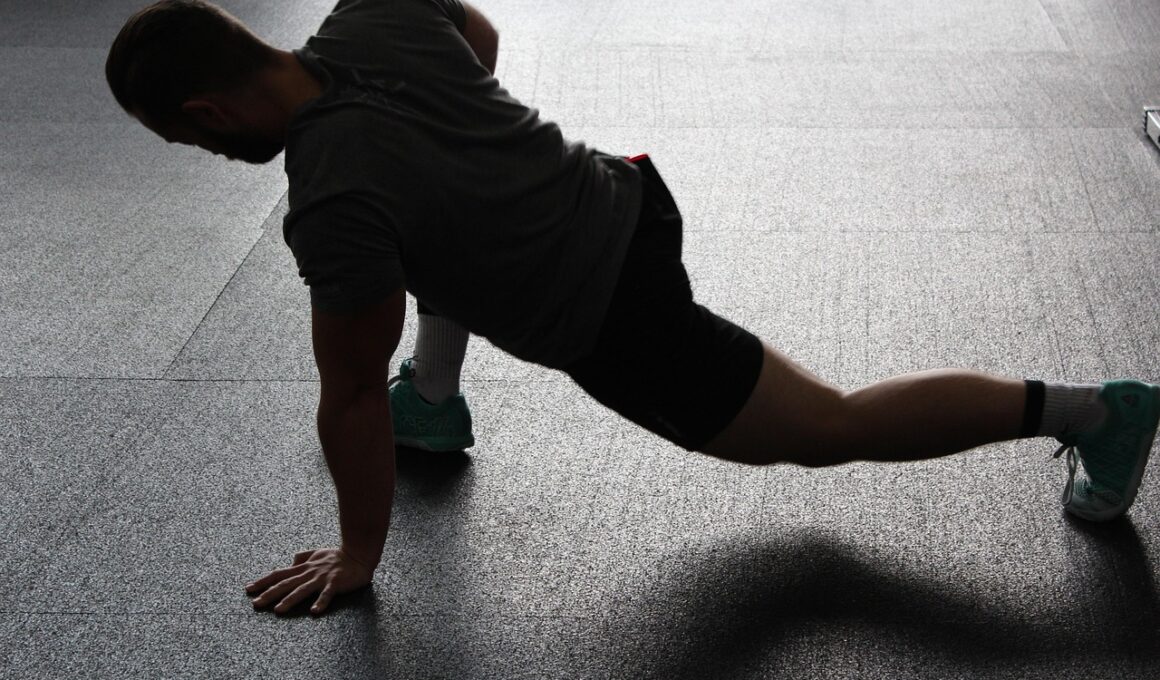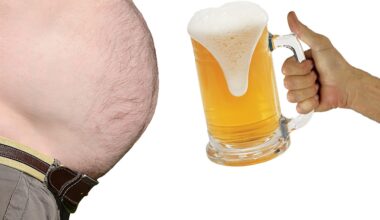Warm-up and Cool-down Tips for Older Adults
Engaging in regular physical activity is essential, especially for older adults. However, before diving into exercise routines, it is crucial to adequately prepare the body through warm-ups. Warm-ups help increase blood flow to the muscles, enhancing flexibility and reducing injury risk. Older adults can benefit from gentle movements targeting major muscle groups, such as neck rolls, arm circles, and seated leg lifts. These exercises should be done in a controlled manner, allowing sufficient time for the body to adjust. Additionally, incorporating range-of-motion exercises can help improve joint mobility and overall performance. Listening to your body is essential during warm-ups; if any movement causes pain or discomfort, it’s crucial to stop and reassess. Always start slowly, gradually increasing the intensity to accommodate physical capabilities. Consistent warm-ups not only prepare the body for exercise but also mentally prepare individuals for the activities ahead. The right warm-up routine will ultimately enhance the overall exercise experience, providing more enjoyment and satisfaction by ensuring the body is ready to perform safely and effectively. Establish a warm-up habit to enhance your overall fitness journey and well-being!
After completing an exercise session, it’s equally important to cool down effectively. Cooling down helps the body transition from vigorous activity to a resting state, promoting recovery and preventing stiffness. For older adults, cooling down can include gentle stretches and deep breathing exercises. Key focus areas should be major muscle groups used during workouts. For example, after a brisk walk or light jogging, consider focusing on hamstring stretches, arm stretches, and calf stretches, holding each for about 15-30 seconds. It’s essential to perform these stretches in a slow, controlled manner to improve flexibility and relax muscles. Furthermore, remaining hydrated during cooling down is critical; drinking water post-exercise aids in recovery and replenishes fluids lost during physical activity. Practicing cooldown stretches consistently will enhance joint mobility, promote circulation, and reduce soreness. In addition, creating a routine that incorporates both warm-ups and cool-downs can significantly impact overall exercise effectiveness and enjoyment. For optimal results, set aside ample time after your workouts to cool down properly. Prioritizing cool-down routines can showcase commitment to health and fitness in older adulthood.
One effective warm-up routine for older adults involves dynamic stretches that mimic the movements of the workout but at a lower intensity. These exercises can be tailored to specific activities, ensuring that the body is adequately prepared. For instance, if your workout includes walking or jogging, consider starting with side leg swings, toe taps, and gentle torso twists to gradually warm the body. These movements will help mobilize the joints and prepare the muscles for increased activity. Moreover, focusing on posture during warm-ups and cooldowns can aid in overall body alignment. Good posture not only enhances balance but also minimizes strain on the lower back and joints. Whenever performing exercises, strive to engage your core muscles gently, supporting stability during movements. Additionally, incorporating mindfulness into your routine can be beneficial. Taking note of breath and body sensations can enhance overall awareness, making the experience more beneficial. A balanced approach will ensure that the warm-up process feels safe and comfortable, serving as a foundation for successful workouts in older adulthood. Therefore, cultivate an enjoyable warm-up practice by exploring various stretches to find what best suits personal preference and needs.
Another vital aspect of warm-ups and cool-downs focuses on hydration and nutrition. Maintaining proper hydration levels is critical, especially for older adults as they are prone to dehydration. Drink water before, during, and after exercise to ensure optimal performance and timely recovery. As part of a warm-up routine, consider consuming a light snack containing carbohydrates or protein to fuel your body, especially if engaging in more extended physical activity sessions. Foods such as bananas, yogurt, or nut butter on whole-grain toast provide energy and enhance stamina. Additionally, post-workout snacks play a significant role in recovery; aim to eat a balanced snack or meal shortly after exercising to replenish nutrients. Combining carbohydrates with proteins within 30 minutes of completing your workout will greatly support muscle recovery and growth. Furthermore, if you are unsure about dietary choices, consulting a healthcare provider or a nutritionist specialized in adult nutrition can offer personal insights. Proper warmth and nourishment for your body during exercise will yield positive effects, ensuring you maximize each workout while promoting long-term health and well-being.
Listening to Your Body
Listening to one’s body is perhaps one of the most crucial tips for older adults when it comes to warm-up and cool-down routines. Everyone experiences different physical capabilities and limitations, and adjustments may be necessary. Monitoring how your body responds to certain movements can help establish an effective routine. If fatigue or pain occurs during warm-ups or cooldowns, it’s essential to stop and reassess. Modifications may be needed to accommodate specific physical limitations or discomfort. Moreover, consider keeping a journal documenting personal experiences with warm-ups and cooldowns, showcasing various exercises that produce beneficial results, allowing continuous improvement over time. Understanding individual progress can inspire confidence and the motivation to remain active. Also, communicating with fitness professionals or trainers can provide insights into suitable adjustments, helping design personalized warm-up and cool-down routines. By recognizing the importance of quality over quantity, older adults will find that shorter, more focused sessions lead to more effective outcomes. Emphasizing how each body responds guarantees a safer and more enjoyable exercise experience across all levels of fitness. Fostering an open dialogue about fitness concerns promotes healthier lifestyles.
Finally, incorporating variety into warm-up and cool-down routines can improve engagement and motivation for older adults. Exploring different stretches, movements, and breathing techniques can keep these sessions fresh and exciting. For instance, try integrating yoga-inspired poses or tai chi movements to enhance flexibility, coordination, and balance while providing the benefits of mindfulness practices. Encourage experimentation with various warm-up exercises, and discover which ones provoke a more energetic response. Moreover, when the body feels challenged and engaged, enthusiasm for physical activity can significantly improve. It’s also important to consider the environment when practicing warm-ups and cool-downs; performing routines outdoors or in scenic locations may offer additional psychological benefits. Connecting with nature while exercising can lead to improved mood and motivation. Participating in group classes or programs focusing on warm-ups and cooldowns tailored for older adults can foster relationships and provide encouragement. Whether practicing alone or with friends, a routine should prioritize enjoying each aspect of the warm-up and cool-down process. Engage with enjoyable sessions, ultimately promoting a healthy and active lifestyle that supports wellness and vitality for years to come.
Conclusion
In conclusion, warm-up and cool-down routines are imperative for older adults undertaking physical activities. These routines ensure comfort, safety, and enhanced performance throughout exercises. By prioritizing gentle movements with a focus on flexibility, older adults can certainly take advantage of comprehensive warm-ups that engage the body effectively. Similarly, effective cooldowns involving deep stretches promote recovery while easing the transition back to everyday activities. Listening to your body is pivotal, making necessary adjustments that cater to personal fitness levels. Moreover, keeping hydration and nutrition in mind contributes significantly to recovery and performance, providing essential energy during and after exercise. Exploring a variety of movements will ultimately enhance motivation and enjoyment in fitness routines. Allowing flexibility within your established practices can lead to overall happiness and fulfillment during physical activity. The combined trends of warming up and cooling down will yield long-term benefits in maintaining quality of life and independence as older adults embrace their fitness journeys. Encouraging proper warm-up and cooldown habits will essentially empower older adults to undertake more significant physical challenges with confidence and assurance, providing the healthy lifestyle they deserve.


